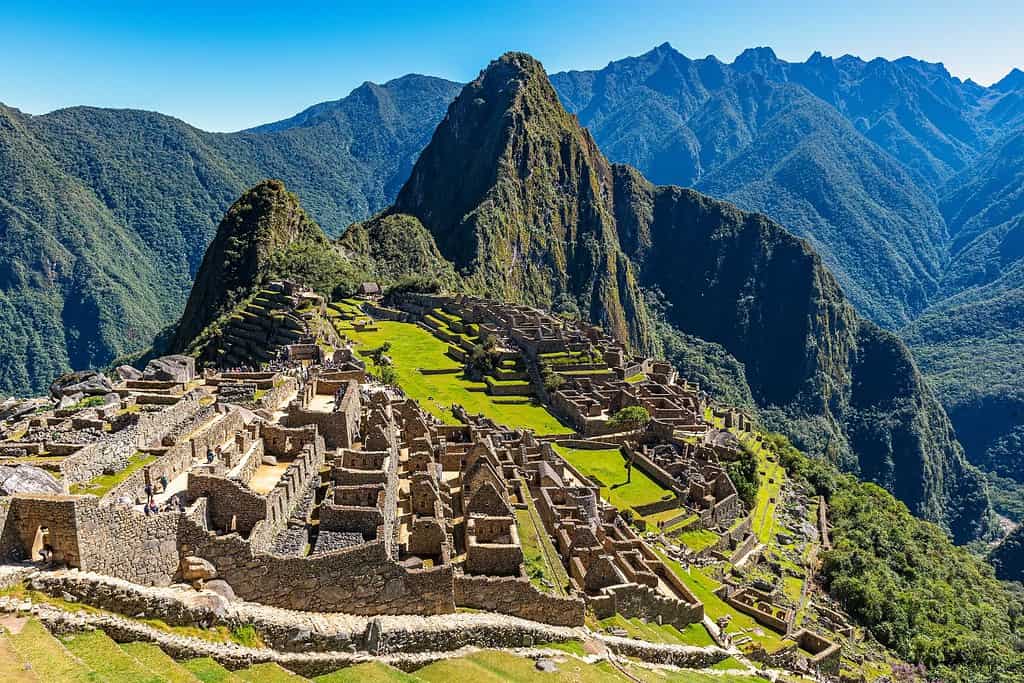Table of Contents
Where is Peru located? Peru is a country situated in South America, on the western part of the continent. It is one of the largest countries in South America.
Peru is positioned along the western coast of South America, with the Pacific Ocean to its west. It shares borders with several neighboring countries. To the north, it is bordered by Ecuador and Colombia. To the east, it shares borders with Brazil and Bolivia. To the south, it is bounded by Chile.
Where is Peru located: South America.
Location of Peru on the World Map
Peru World
Map of Peru.
Peru Profile – Where is Peru located
Here are 10 of the most important facts about Peru:
- Official Name: Republic of Peru
- Capital City: Lima
- Population: Approximately 32 million (as of 2021)
- Official Language: Spanish
- Currency: Peruvian Sol (PEN)
- Major Religion: Roman Catholicism (predominant)
- Government: Presidential republic
- Area: Approximately 1,285,216 square kilometers
- GDP (Gross Domestic Product): $203.8 billion (as of 2021)
- Main Exports: Copper, gold, zinc, petroleum, and agricultural products.

Borders of Peru
Peru shares land borders with five countries.
| Bordering Country | Approximate Length of Border (in kilometers) |
|---|---|
| Ecuador | 1,420 km |
| Colombia | 1,496 km |
| Brazil | 2,995 km |
| Bolivia | 1,075 km |
| Chile | 160 km |
Peru Map
Navigate over this map with your mouse to discover Peru’s map location.
Peru
Most Extreme Points of Peru
Peru boasts a diverse range of extreme geographic points spanning various directions:
- Northernmost Point: Located in the vicinity of the border shared with Ecuador, north of the city of Tumbes.
- Southernmost Point: The point where Peru meets Chile at the southern end of the country, near the town of Tacna.
- Easternmost Point: Situated along the border with Brazil, in the Amazon rainforest region, near the town of Iñapari.
- Westernmost Point: Positioned along the Pacific Ocean coastline, west of the city of Talara.
Highest Points of Peru
The highest peak in Peru is Huascarán, reaching an elevation of approximately 6,768 meters above sea level. It is part of the Andes mountain range.
| No. | Mountain | Elevation (meters) |
|---|---|---|
| 1 | Huascarán | 6,768 |
| 2 | Yerupajá | 6,635 |
| 3 | Coropuna | 6,425 |
| 4 | Ampato | 6,288 |
| 5 | Huandoy | 6,395 |
How big is Peru?
Peru spans an area of about 1,285,216 square kilometers, ranking as the 19th largest country globally.
Comparison with Neighboring Countries
Here is a comparison of Peru with its neighboring countries in South America based on approximate size and population as of 2021:
| Country | Approximate Size (sq. km) | Approximate Population | Peru’s Size Compared to Neighboring Country | Peru’s Population Compared to Neighboring Country |
|---|---|---|---|---|
| Ecuador | 283,561 | 17.6 million | 1.30 times smaller | 0.58 times smaller |
| Colombia | 1,138,910 | 51 million | 0.32 times smaller | 1.11 times smaller |
| Brazil | 8,515,767 | 212 million | 0.04 times smaller | 4.78 times smaller |
| Bolivia | 1,098,581 | 11.7 million | 0.32 times smaller | 4.35 times smaller |
| Chile | 756,096 | 19.7 million | 0.46 times smaller | 2.64 times smaller |
| Argentina | 2,780,400 | 45.4 million | 0.12 times smaller | 1.22 times smaller |
What to Visit in Peru?
Peru is a country rich in history, culture, and natural beauty. Here are the top 8 tourist attractions you shouldn’t miss:
- Machu Picchu: Known as the Lost City of the Incas, Machu Picchu is a UNESCO World Heritage Site and one of the most iconic archaeological wonders in the world.
- Cusco: The historic city of Cusco, once the capital of the Inca Empire, boasts well-preserved colonial architecture and is the gateway to Machu Picchu.
- Lima: Peru’s capital city, Lima, offers a unique blend of history and modernity, with its colonial old town and vibrant culinary scene.
- Sacred Valley: This picturesque region is home to charming towns like Ollantaytambo and Pisac, as well as ancient Inca ruins and stunning landscapes.
- Lake Titicaca: The highest navigable lake in the world, Lake Titicaca is known for its indigenous communities, floating islands, and natural beauty.
- Arequipa: The “White City” of Arequipa is famous for its colonial architecture, including the stunning Santa Catalina Monastery.
- Nazca Lines: These mysterious geoglyphs etched into the desert floor have puzzled researchers for years and are best viewed from a small aircraft.
- Amazon Rainforest: Peru’s portion of the Amazon Rainforest offers incredible biodiversity and opportunities for wildlife encounters and eco-tourism.
These Peru destinations provide a diverse range of experiences, from exploring ancient Inca heritage and colonial history to immersing yourself in vibrant city life and experiencing the natural wonders of Peru’s landscapes. Keep in mind that some places, such as Machu Picchu, may have entry restrictions or require advance booking, so it’s essential to plan your visit accordingly.
More About Peru
[the-post-grid id=”50410″ title=”Peru Main page”]
